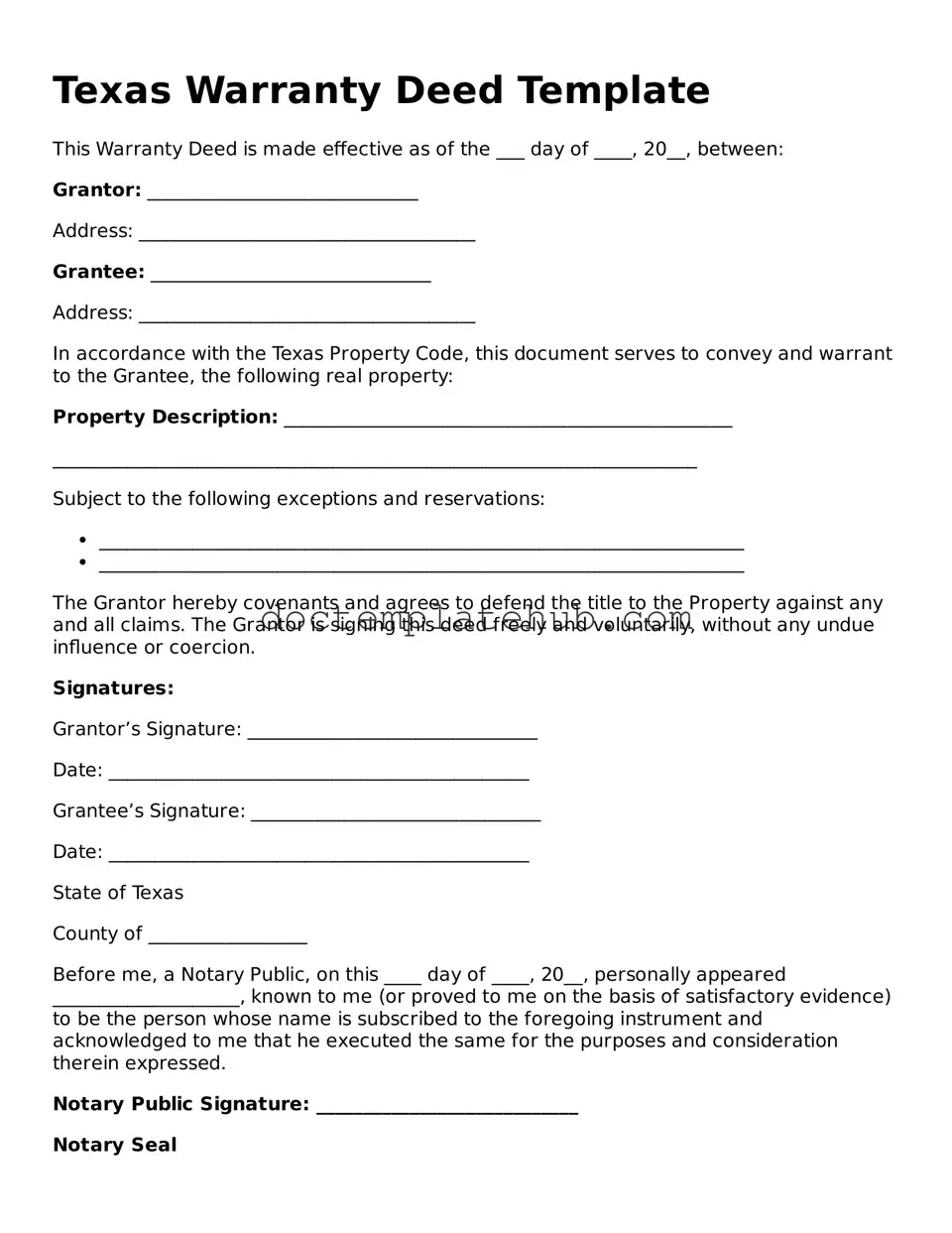The Texas Deed form shares similarities with the Warranty Deed. Both documents serve to transfer ownership of real estate from one party to another. A Warranty Deed provides a guarantee that the seller holds clear title to the property and has the right to sell it. This means that if any issues arise regarding the title, the seller is responsible for resolving them. In Texas, a Warranty Deed is commonly used to ensure that the buyer receives full legal protection against any potential claims on the property.
Another document akin to the Texas Deed is the Quitclaim Deed. Unlike the Warranty Deed, a Quitclaim Deed transfers whatever interest the seller has in the property without any guarantees. This means that if the seller does not have clear title, the buyer may not have any recourse. Quitclaim Deeds are often used in situations where the parties know each other well, such as family transfers or divorce settlements, where the emphasis is on transferring whatever rights exist rather than ensuring a clean title.
The Special Warranty Deed is yet another document that resembles the Texas Deed. This type of deed also transfers ownership but offers limited warranties. The seller guarantees that they have not encumbered the property during their ownership, but they do not provide any assurances about prior ownership. This makes the Special Warranty Deed a middle ground between a Warranty Deed and a Quitclaim Deed, often used in commercial transactions or by developers.
The importance of understanding various property transfer documents is crucial for anyone involved in real estate transactions. For instance, a Texas Durable Power of Attorney form can also play a significant role in these matters by allowing someone to manage financial affairs effectively, even if the individual is incapacitated. For more information on how to establish this legal document, you can visit smarttemplates.net, where you'll find resources to help navigate the complexities of legal forms and ensure your financial interests are protected.
The Bargain and Sale Deed is similar in that it conveys property ownership but typically does not include warranties. The seller conveys the property "as is," meaning the buyer assumes all risks associated with the title. This type of deed is often utilized in foreclosure sales or tax lien sales, where the seller may not have full knowledge of the property’s condition or title history.
The Grant Deed also bears resemblance to the Texas Deed. This document conveys property and includes implied warranties that the seller has not sold the property to anyone else and that the property is free from encumbrances made during the seller's ownership. While not as common in Texas, Grant Deeds are often used in other states and provide a level of assurance to the buyer without the extensive guarantees found in a Warranty Deed.
Lastly, the Deed of Trust, while serving a different purpose, can be compared to the Texas Deed in that it involves the transfer of property rights. A Deed of Trust is used primarily in financing transactions, where the borrower conveys the property to a trustee as security for a loan. This document outlines the responsibilities of the borrower and the lender and provides a mechanism for foreclosure if the borrower defaults. While the Texas Deed focuses on transferring ownership, the Deed of Trust emphasizes the security of a loan, illustrating the diverse ways property interests can be handled in real estate transactions.
